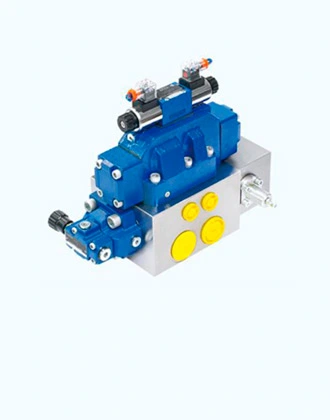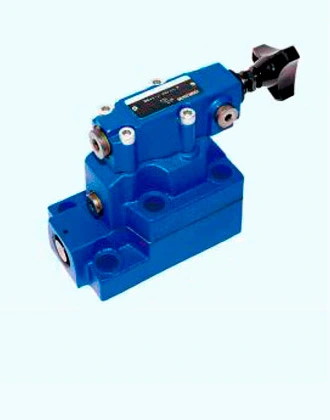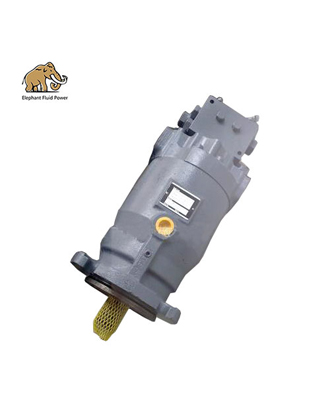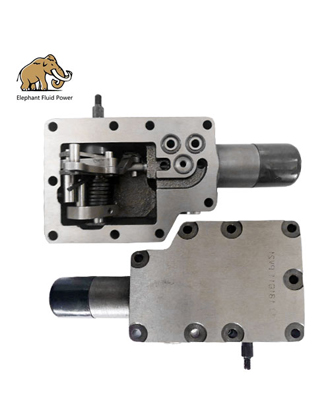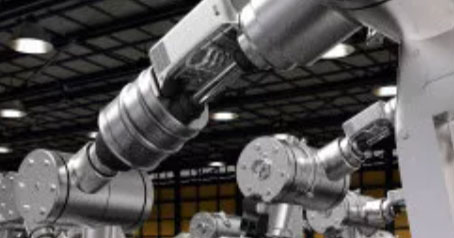Selecting the appropriate directional valve in hydraulic system is a critical decision that impacts its efficiency and performance. In this blog, we'll delve into the factors you need to consider when choosing a directional valve, and we'll explore how making the right choice can optimize your system's overall functionality.
Factors to Consider
The first step in selecting a directional valve in hydraulic system is evaluating the required flow rate and pressure of your hydraulic system. Different valves are designed to handle specific ranges of flow rates and pressures. Choosing a valve that matches these specifications ensures optimal performance and prevents undue stress on the system. Consider the level of control you need over your hydraulic actuators. Do you require simple on-off control, or do you need proportional control for precise and gradual movement? Your desired level of control will guide you towards selecting the appropriate valve design. Take into account the environment in which your hydraulic system operates and the type of hydraulic fluid being used. It's crucial that the materials of the directional valve are compatible with the fluid and can withstand the environmental conditions without degradation.
Valve Configuration
Different directional valve in hydraulic system offer varying capabilities. These configurations include 2-way, 3-way, and 4-way valves. Choose the configuration that aligns with your system's requirements and the intended flow paths. Determine the actuation method that suits your needs. Manual actuation might be suitable for simpler systems, while solenoid-operated or hydraulic pilot-operated valves offer varying levels of automation and control precision.
Application-Specific Considerations
Some applications demand rapid responses and quick movements, while others prioritize smooth and controlled motion. Choose a valve that aligns with your application's speed requirements to ensure optimal performance. Consider the nature of the loads your directional valve in hydraulic system deals with. Does your system primarily handle steady loads or dynamic loads that change rapidly? This consideration will influence the choice of directional valve to ensure proper load control.
Selecting the right directional valve is a vital step in building an efficient and reliable hydraulic system. By carefully assessing factors such as flow rate, pressure, control requirements, environment, and fluid compatibility, you can make an informed decision. The chosen directional valve will not only optimize your hydraulic system's performance but also contribute to the longevity and reliability of your machinery and equipment.
 French
French
 Portuguese
Portuguese
 Russian
Russian
 German
German
 Spanish
Spanish
 Japanese
Japanese
 Korean
Korean
 Irish
Irish
 Greek
Greek
 Turkish
Turkish
 Italian
Italian
 Danish
Danish
 Romanian
Romanian
 Indonesian
Indonesian
 Czech
Czech
 Afrikaans
Afrikaans
 Swedish
Swedish
 Polish
Polish
 Basque
Basque
 Catalan
Catalan
 Esperanto
Esperanto
 Hindi
Hindi
 Lao
Lao
 Albanian
Albanian
 Amharic
Amharic
 Armenian
Armenian
 Azerbaijani
Azerbaijani
 Belarusian
Belarusian
 Bengali
Bengali
 Bosnian
Bosnian
 Bulgarian
Bulgarian
 Cebuano
Cebuano
 Chichewa
Chichewa
 Corsican
Corsican
 Croatian
Croatian
 Dutch
Dutch
 Estonian
Estonian
 Filipino
Filipino
 Finnish
Finnish
 Frisian
Frisian
 Galician
Galician
 Georgian
Georgian
 Gujarati
Gujarati
 Haitian
Haitian
 Hausa
Hausa
 Hawaiian
Hawaiian
 Hebrew
Hebrew
 Hmong
Hmong
 Hungarian
Hungarian
 Icelandic
Icelandic
 Igbo
Igbo
 Javanese
Javanese
 Kannada
Kannada
 Kazakh
Kazakh
 Khmer
Khmer
 Kurdish
Kurdish
 Kyrgyz
Kyrgyz
 Latin
Latin
 Latvian
Latvian
 Lithuanian
Lithuanian
 Luxembourg
Luxembourg
 Macedoniar
Macedoniar
 Malagasy
Malagasy
 Malay
Malay
 Malayalam
Malayalam
 Maltese
Maltese
 Maori
Maori
 Marathi
Marathi
 Mongolian
Mongolian
 Burmese
Burmese
 Nepali
Nepali
 Norwegian
Norwegian
 Pashto
Pashto
 Persian
Persian
 Punjabi
Punjabi
 Serbian
Serbian
 Sesotho
Sesotho
 Sinhala
Sinhala
 Slovak
Slovak
 Slovenian
Slovenian
 Somali
Somali
 Samoan
Samoan
 Scots Gaelic
Scots Gaelic
 Shona
Shona
 Sindhi
Sindhi
 Sundanese
Sundanese
 Swahili
Swahili
 Tajik
Tajik
 Tamil
Tamil
 Telugu
Telugu
 Thai
Thai
 Ukrainian
Ukrainian
 Urdu
Urdu
 Uzbek
Uzbek
 Vietnamese
Vietnamese
 Welsh
Welsh
 Xhosa
Xhosa
 Yiddish
Yiddish
 Yoruba
Yoruba
 Zulu
Zulu

